The red-listed Ringed Plover (Charadrius hiaticula), a species of the highest national conservation concern, is again breeding on the Borax fields next to Crossness Nature Reserve.
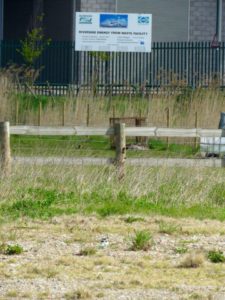
A Ringed Plover on its nest can just be picked out near the bottom centre of this picture. Proximity to the Cory incinerator can be seen by the sign in the background. (Photo: Donna Zimmer)
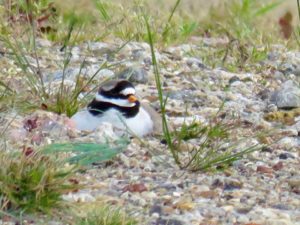
High power zoomed picture of Ringed Plover on its nest, taken from a safe distance outside the fence line. Note yellow bill with black tip, also ‘open mosaic’ habitat of gravelly ground and sparse vegetation. (Photo: Donna Zimmer)
Skylark, also red-listed, is thought to be doing likewise, and Little Ringed Plover (Charadrius dubius) has been seen in the vicinity, having bred here last year. The fields are the only breeding site in Bexley for these Plover species.
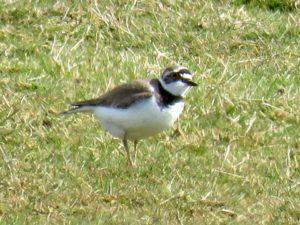
Little Ringed Plover at Crossness, its only breeding site in Bexley. Note dark bill and clear yellow eye-ring. (Photo: Donna Zimmer)
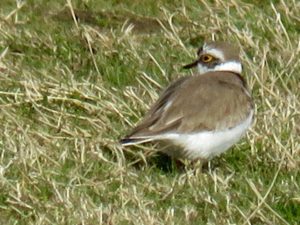
Another picture of a Little Ringed Plover at Crossness. The yellow eye ring is particularly clear in this view. (Photo: Donna Zimmer)
The open mosaic habitat on the Borax fields – patches of mainly short vegetation, with bare gravelly areas in between – are essential for these birds and are not replicated elsewhere in the area. There is a London Plan target for retention and re-creation of this type of habitat, which is also important for warmth-loving insects, but Bexley Council has made no contribution to this whatsoever. Instead Cory ‘Environmental’ wants to build two 4-storey data centres on the fields and Bexley Council has said it will pay no attention to biodiversity issues or value as it draws up a register of ‘brownfield sites’ in the Borough which could contribute such habitat. Indeed when Bexley Natural Environment Forum asked for the Borax fields to be surveyed at the 2013 Sites of Importance for Nature Conservation review, along with brownfield sites, it was claimed that this was not possible because there was no list of them. How convenient that the Council can find the resources to produce one now, when it has even less money – but only to further its heavily pro-concrete ‘growth’ agenda.
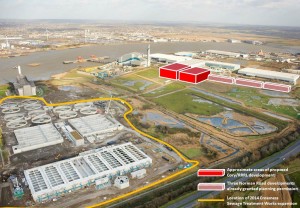
Aerial image showing the huge cumulative impact of recent and projected ‘development’ on Erith Marshes. The two buildings proposed by Cory will take up most of both fields and will be four storeys high, much taller than nearby warehousing.
Cory ‘Environmental’? Pull the Plover one!

Must be dangerous ground nesting like that what with all the bloody Cats around these days!
Foxes and Crows more of a risk here. Due to traveller incursion Cory put up a load of security fencing which carries risk of providing more nearby perches for Corvids.